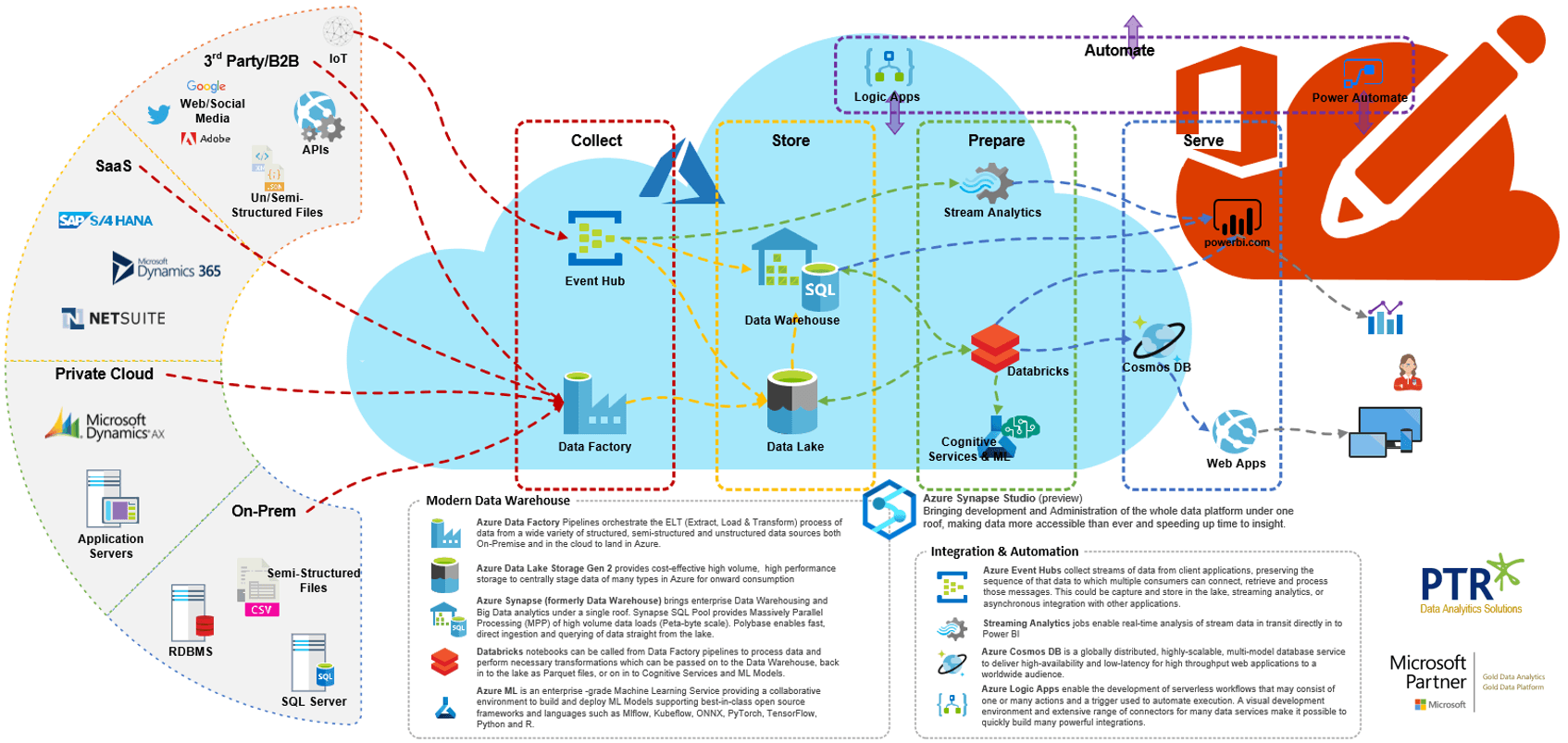Microsoft Azure Consultancy Services
Unlock Digital Innovation with Azure Solutions
Azure is a public cloud offering from Microsoft with over 200 products and services available to build all manner of digital solutions. We can help you navigate the myriad options available and understand and optimise the cost implications.


What is Microsoft Azure?
Cloud computing continues to go from strength to strength, with major providers such as Microsoft, Amazon, Google, etc. putting a colossal amount of computing resource and functionality at the fingertips of organisations worldwide. In its simplest terms, cloud computing is the delivery of IT services over the internet, providing access to computing power, storage, and data, paid for on a metered or subscription basis without having to buy and maintain those physical resources yourself.

Since its official launch in 2010, Microsoft Azure has continued to extend capabilities that go well beyond this basic infrastructure management and offer a giddying array of services to support Application development, Data and Analytics, Internet of Things (IoT), Identity and Access control, Artificial Intelligence and Machine Learning.
Providing Anything as a Service (XaaS)
Like most cloud providers, Microsoft Azure's services fall into broad categories of resource provided "-as-a-Service", sometimes referred to as the cloud computing "stack" due to their modular nature and the way they are designed to build on top of one another.
Some examples include:
Infrastructure as a Service (SaaS)
Platform as a Service (PaaS)
Software as a Service (SaaS)
Network as a Service (NaaS)
Artificial Intelligence as a Service (AIaaS)
Model as a Service (MaaS)
These categories can help you differentiate how much of the process you are managing yourself vs how much your provider is taking care of for you and selection decisions will be based on assessing how much control you need over those layers and how much administrative and maintenance burden you would like to offload to your provider.
To take 2 of the simplest examples for comparison, with Infrastructure as a Service (IaaS), you rent IT infrastructure from your provider, via a Virtual Machine for instance, whereby your provider is responsible for maintaining the hardware and operating system, but you take ownership of the software installation, configuration, maintenance, and security that is deployed on top of that. With Software as a Service (SaaS) on the other hand, your provider takes care of the entire hardware and software stack, you simply interact with it and focus on your own content, such as with Microsoft Word for example - you simply focus on writing your document and let Microsoft manage the rest.
What are the benefits?
There are many benefits, although they do come with caveats and any move into the cloud needs to be done carefully and with proper planning, but to name a few:
Low Capital expenditure (CAPEX) - Without the need to purchase and implement expensive hardware and software licenses up-front, there is a much lower initial outlay to implement new services in the cloud.
This does mean a move to a typically higher operational expenditure (OPEX), where you are paying regular ongoing fees for usage. This does not automatically mean "cheaper" without proper planning, and this change in budgeting model can be a challenge for some organisations to transition to.
Greater Agility - New services can be spun up, old services de-provisioned, and existing services modified and up or down scaled at the push of a button, making it much faster to manage change, reduce time-to-market for new services, and cut costs from unneeded services at the earliest opportunity.
Lower Administrative Overhead - With many of the lower layers of the computing model abstracted away from you and handled for you by your cloud provider, there is less routine maintenance and administration required for tasks such as hardware maintenance and replacement, software patching and updates, backups and disaster recovery.
It is still important however to understand and have confidence in how these processes take place, and with so many different services interacting with one another and all providing their own administrative models and interfaces, there is certainly still a lot of admin to think about.
Reliability - Cloud computing makes implementing business continuity and high availability solutions easier and less expensive as data can be mirrored across multiple sites within the cloud provider's network, taking advantage of the economy of scale that comes for using their massive distributed compute environment that would otherwise be very expensive to implement individually.
How can PTR help you?
As a Microsoft Solutions Partner for Data & AI in Azure, we specialise in helping our customers navigate the complex array of Microsoft Azure resources to design robust data and analytics platforms.
Provide strategic advice and develop sustainable technical strategies
Understand the difference and choose between the many data services available
Understand the different billing models and tiers to make sensible selections and estimate consumption and costs
Implement and configure Azure resources
Implement secure networking and integrate with existing infrastructure within Azure, across other cloud providers, and on-prem
Understand and implement secure user and access control practices using Microsoft Entra ID
Build and maintain databases, data warehouse, data lakes, and data lakehouses using tools such as Azure SQL, Azure Data Factory, Azure Storage Accounts, Azure Synapse, Azure Logic Apps and Functions, Automation Accounts and Runbooks

Share This Post
Frequently Asked Questions
Couldn’t find the answer you were looking for? Feel free to reach out to us! Our team of experts is here to help.
Contact Us